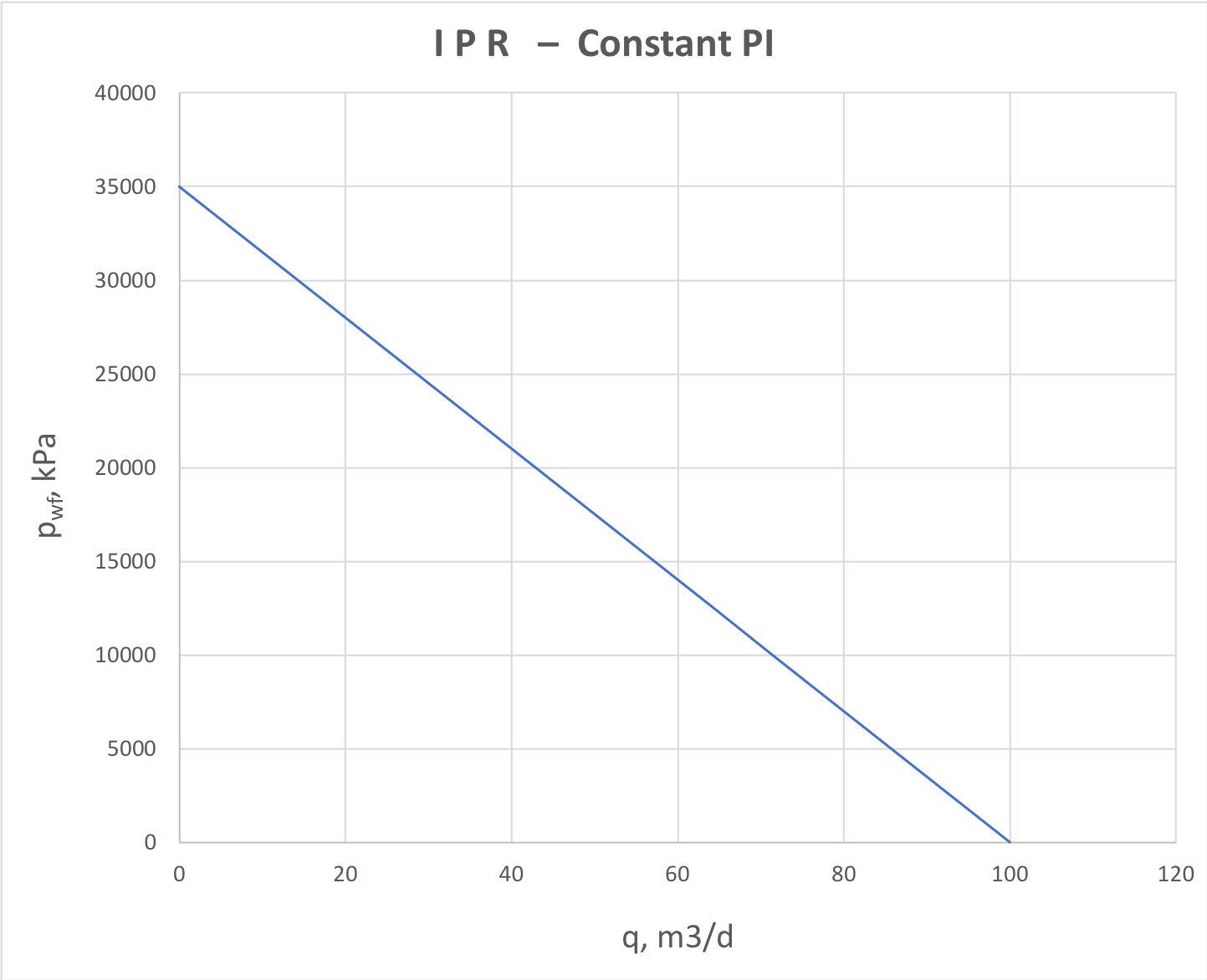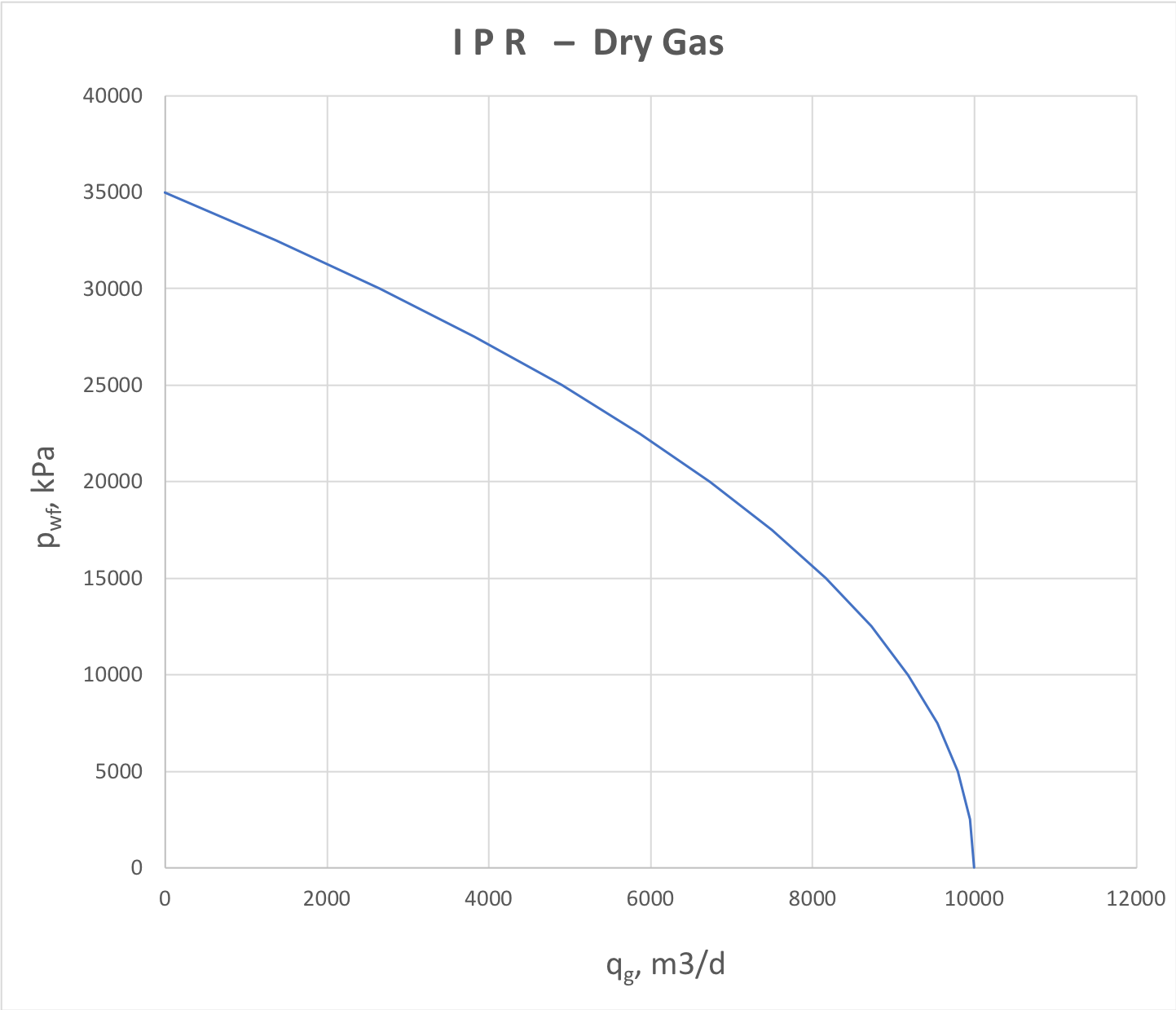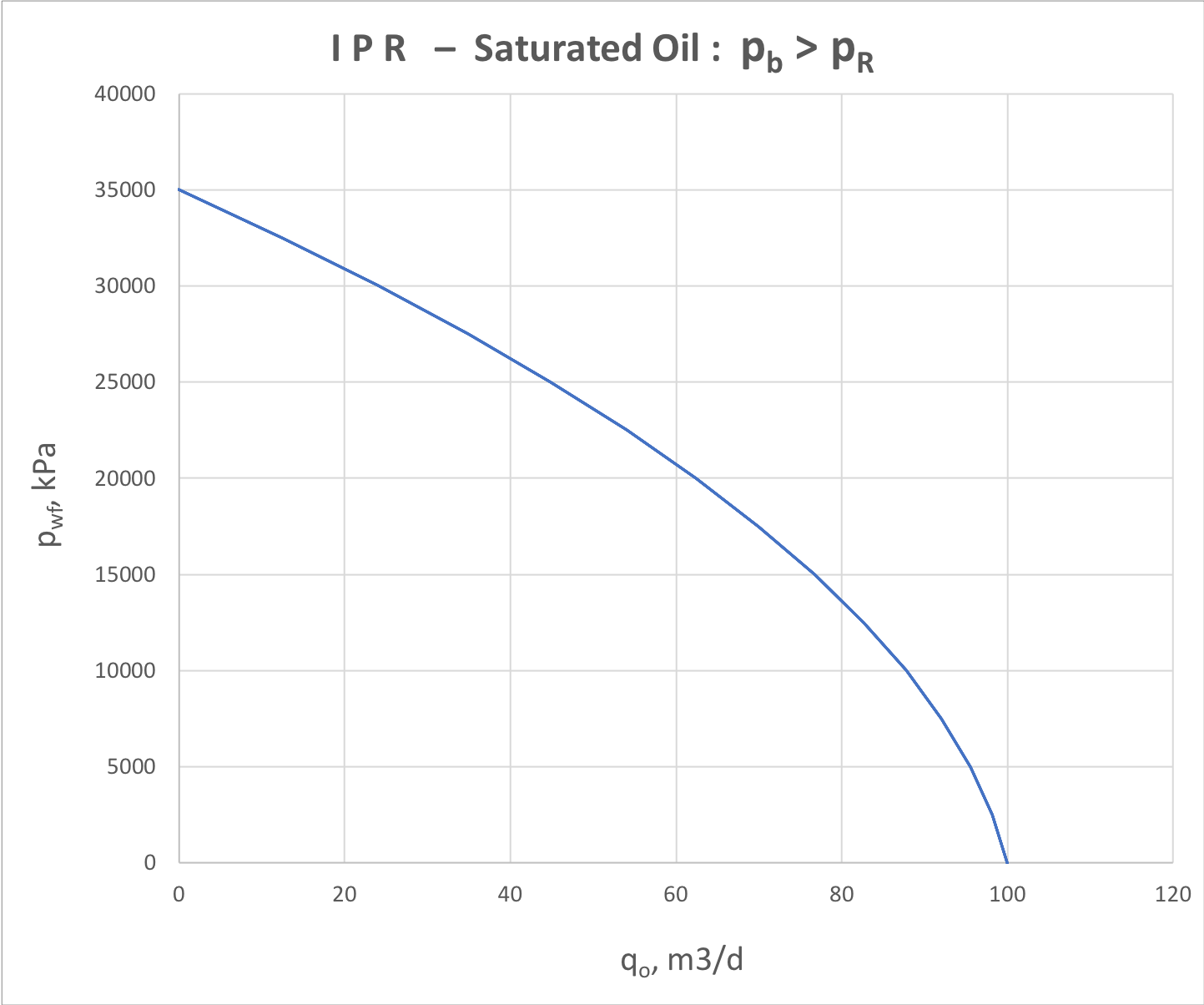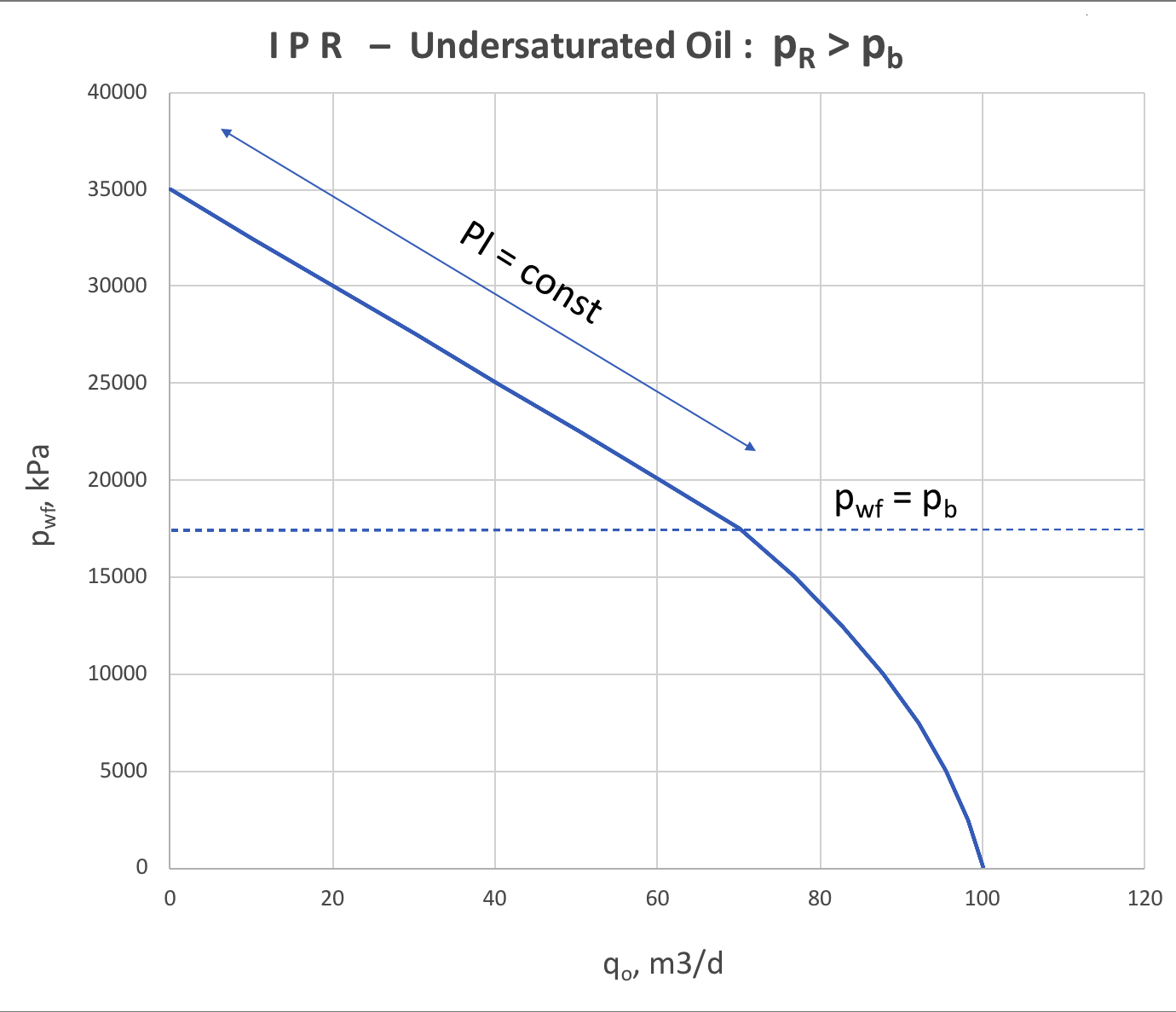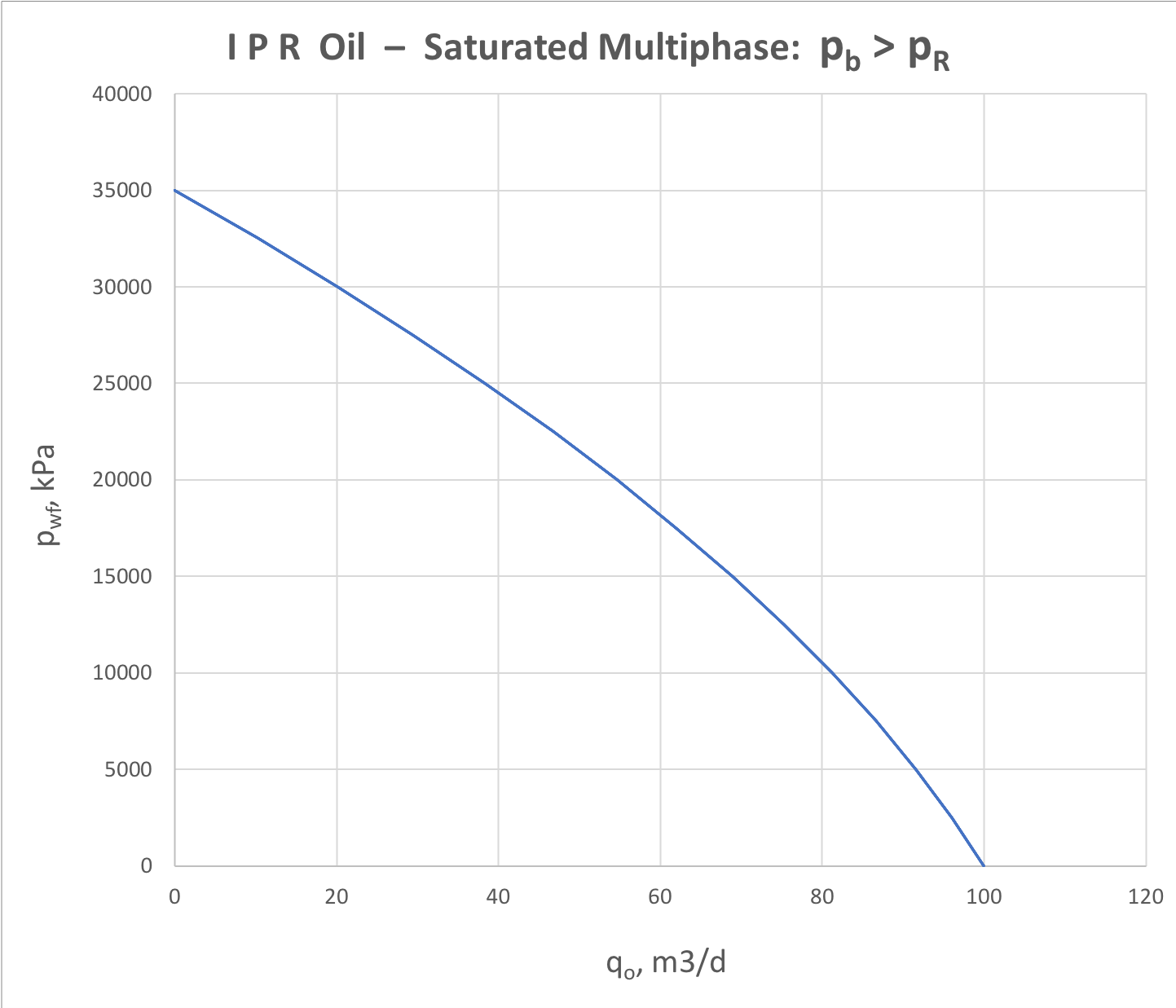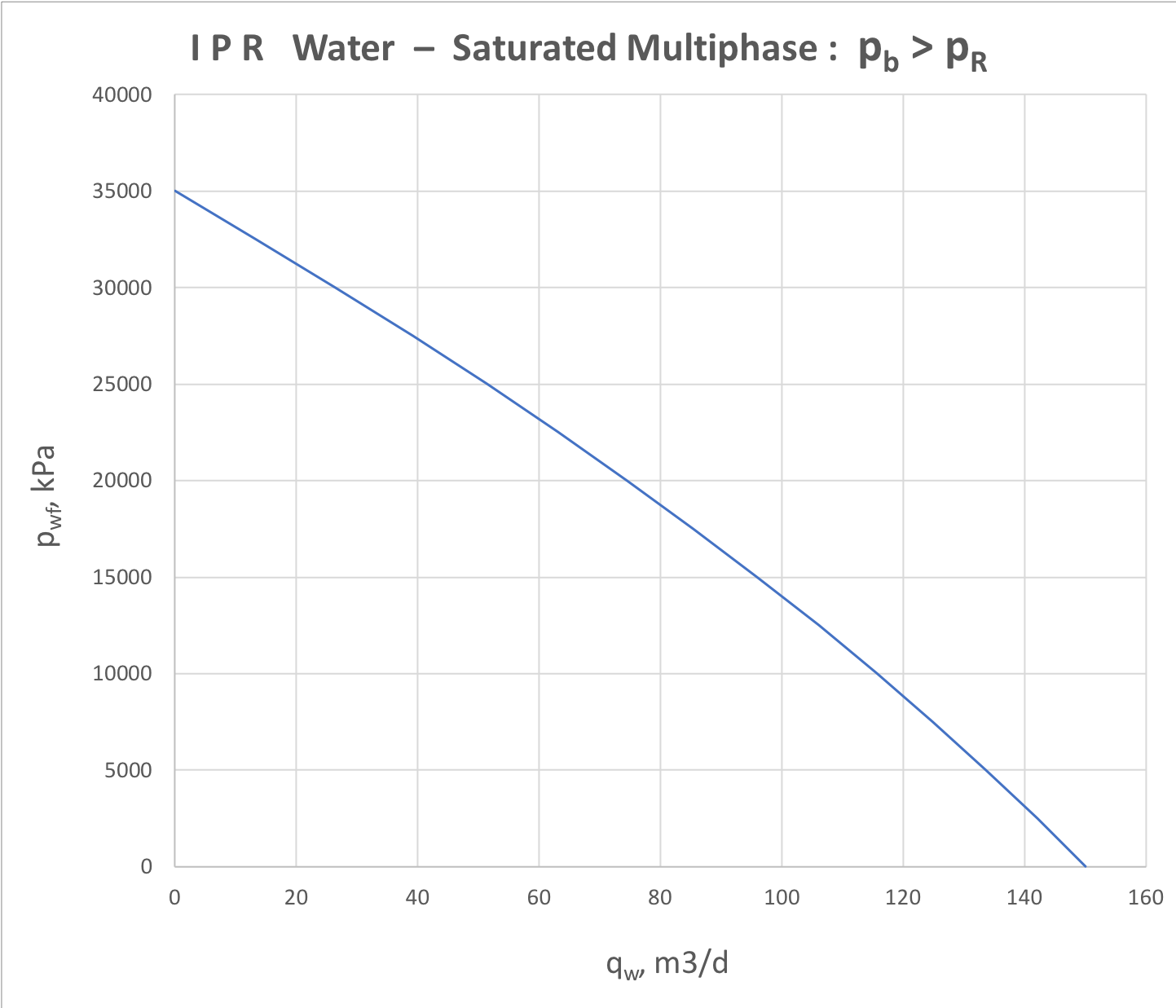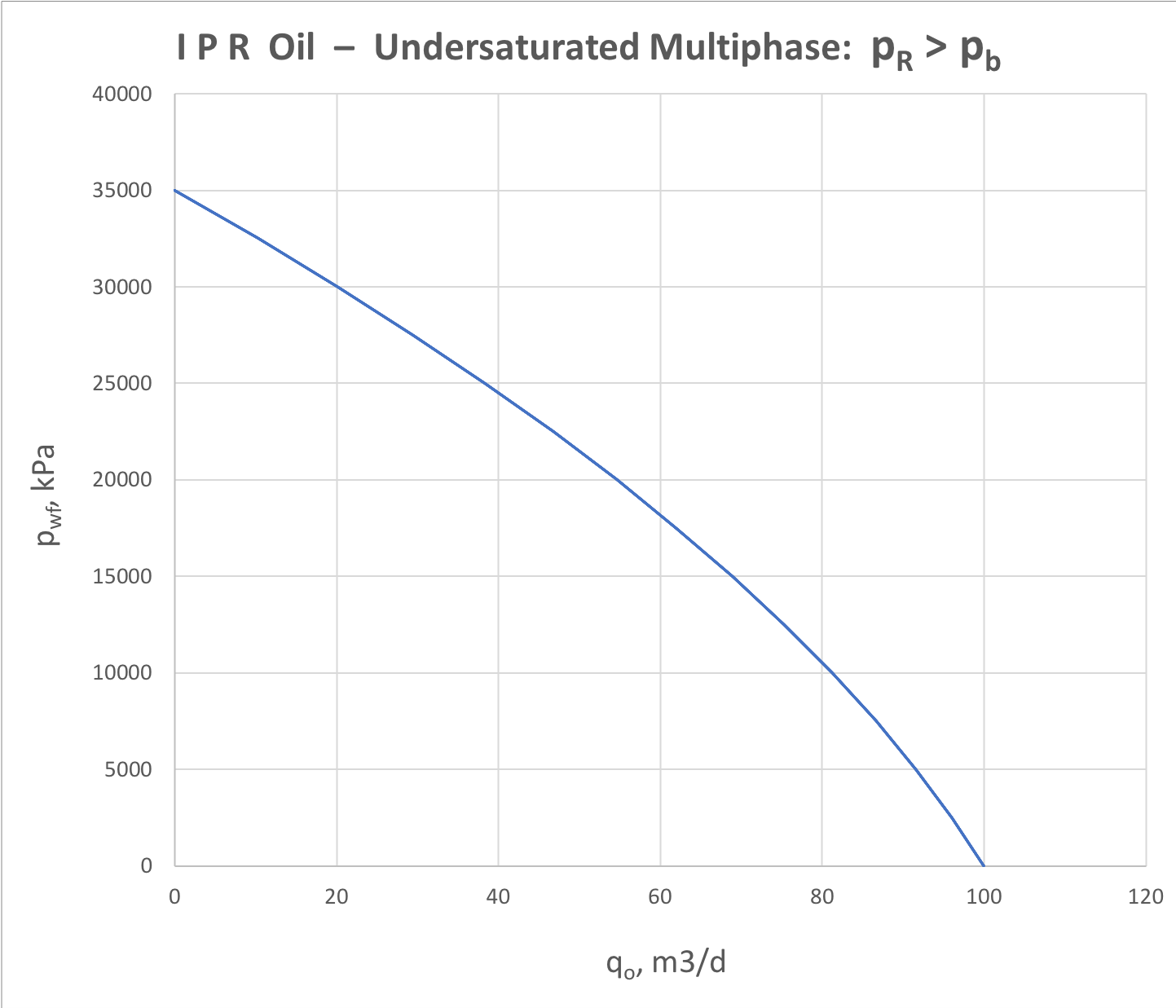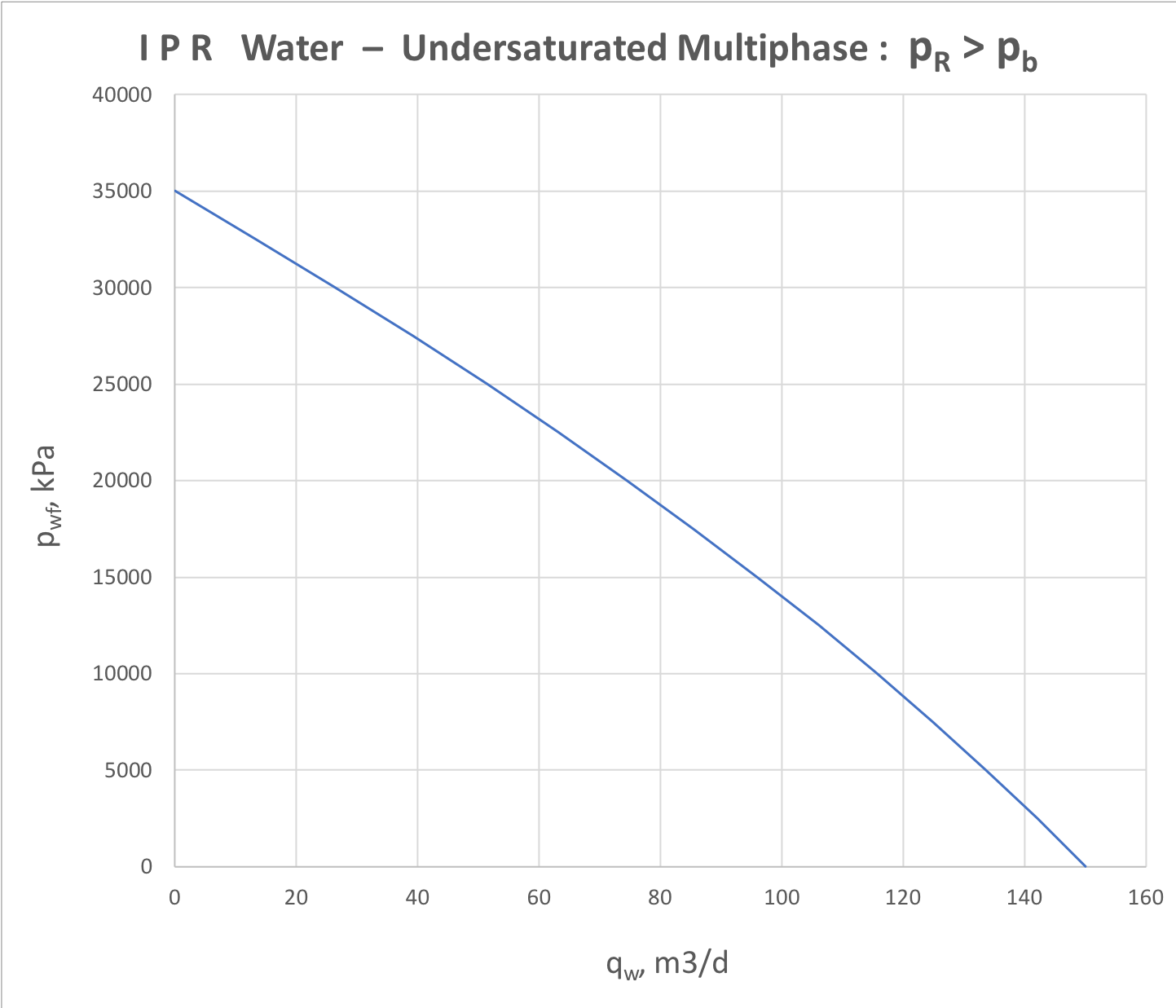The One of the Productivity Diagnostics methods based on relation between the bottom-hole pressure
and surface flow rate
during the
stabilised formation flow (see
the reference to original paper of Gilbert):
| LaTeX Math Block |
|---|
|
p_{wf} = p_{wf}(q) |
...
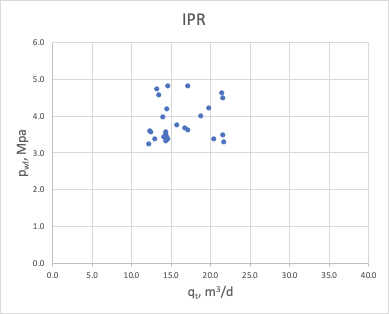 Image Added Image Added
|
| Fig. 1 |
...
One of the two key concepts of Well Flow Performance analysis along with Vertical Lift Performance (VLP).
The word "Inflow" is misnomer as Inflow Performance Relationship (IPR) analysis is applicable for both producers and injectors.
The most general proxy-model is given by LIT (Laminar Inertial Turbulent) IPR model:
| LaTeX Math Block |
|---|
|
a \, q + b \, q^2 = \Psi(p_r) - \Psi(p_{wf}) |
where
| static wellbore pressure |
| laminar flow coefficient |
| turbulent flow coefficient |
| pseudo-pressure function specific to fluid type |
It needs well tests at least three different rates to assess
| LaTeX Math Inline |
|---|
| body | --uriencoded--\%7B a \, , \, b, \, p_r \%7D |
|---|
|
but obviously more tests will make assessment more accurate.
The Inflow Performance Relationship (IPR) analysis is closely related to well Productivity Index (PI)
which is defined as below:
...
The Productivity Index can be constant (showing a straight line on IPR like on Fig. 12) or dependent on bottomhole pressure
or equivalently on flowrate
(showing a curved line on
IPR like on
Fig. 23) .
In general case of multiphase flow the PI
features a complex dependance on bottom-hole pressure
(or equivalently on flowrate
) which can be etstablished based on numerical simulations of multiphase formation flow.
For undersaturated reservoir the numerically-simulated Inflow Performance Relationship (IPR)s have been approximated by analytical models and some of them are brought below.
...
These correaltions should be calibrated to the available well test data to set a up a customised IPR model for a given formation.
...
For a single layer formation with low-compressibility fluid (water or dead oil) the PI does not depend on drawdown (or flowrate)
and
IPR plot is
reperented represented by a straight line (
Fig. 12)
|
| Fig. 12. IPR plot for constant productivity (water and dead oil) |
...
This is a typical IPR plot for water supply wells, water injectors and dead oil producers.
The For the oil/water production the PI can be estimated using the Darcy equation Dupuit PI @model:
| LaTeX Math Block |
|---|
|
J_s = \frac{2 \pi \sigma}{ \ln \frac{r_e}{r_w} + \epsilon+ S} |
where
| LaTeX Math Inline |
|---|
| body | \sigma = \Big \langle \frac{k} {\mu} \Big \rangle \, h = k \, h\, \Big[ \frac{k_{rw}}{\mu_w} + \frac{k_{ro}}{\mu_o} \Big] |
|---|
|
– water-based or water-oil-based
transmissbility transmissibility above bubble point
| LaTeX Math Block Reference |
|---|
| anchor | Perrine2phase_alpha |
|---|
| page | Linear Perrine multi-phase diffusion @model |
|---|
|
,
...
The alternative form of the constant Productivity Index IPR is given by:
| LaTeX Math Block |
|---|
|
\frac{q}{q_{max}} = 1 -\frac{p_{wf}}{p_r} |
where
is the maximum reservoir deliverability when the bottom-hole is at atmospheric pressure and also called
Absolute Open Flow (AOF).
...
For gas producers, the fluid compressibility is high and formation flow is essentially non-linear, inflicting the downward trend on the whole IPR plot (Fig. 23).
|
Fig. 23. IPR for dry gas producer or gas injector into a gas formation |
...
where
is the turbulent flow exponent, equal to 0.5 for fully turbulent flow and equal to 1 for
laminar flow.The more accurate approximation is given by LIT (Laminar Inertial Turbulent) IPR model:
| LaTeX Math Block |
|---|
|
a \, q + b \, q^2 = \Psi(p_r) - \Psi(p_{wf}) |
where
– is pseudo-pressure function specific to a certain gas PVT model, is laminar flow
coefficient and is turbulent flow coefficient.It needs two well tests at two different rates to assess | LaTeX Math Inline |
|---|
| body | \{ q_{max} \, , \, n \} |
|---|
|
or .
But obviously more tests will make assessment more accruate.
Saturated Oil IPR
...
For saturated oil reservoir the free gas flow inflict the downward trend of IPR plot similar to dry gas (Fig. 34).
|
Fig. 34. IPR for 2-phase oil+gas production below and above bubble point |
...
| Excerpt Include |
|---|
| Vogel IPR @ model |
|---|
| Vogel IPR @ model |
|---|
| nopanel | true |
|---|
|
...
For undersaturated oil reservoir
the behavior of
IPR model will vary on whether the bottom-hole pressure is above or below bubble point.
When it is higher than bubble point
then formation flow will be single-phase oil and production will follow the constant
Inflow Performance Relationship (IPR).
When bottom-hole pressure goes below bubble point
the near-reservoir zone free gas slippage also inflicts the downward trend at the right side of
IPR plot (
Fig. 35).
It can be interpreted as deterioration of near-reservoir zone permeability when the fluid velocity is high and approximated by rate-dependant skin-factor.
|
Fig. 35. IPR for 2-phase oil+gas production below and above bubble point |
...
| LaTeX Math Block |
|---|
|
q_{max} = q_b \, \Big[1 + \frac{1}{1.8} \frac{p_b}{(p_r - p_b)} \Big] |
...
For saturated 3-phase water-oil-gas reservoir the IPR analysis is represented by oil and water components separately (see Fig. 46.1 and Fig. 46.2).
| |
Fig. 46.1. Oil IPR for saturated 3-phase (water + oil + gas) formation flow | Fig. 46.2. Water IPR for saturated 3-phase (water + oil + gas) formation flow |
...
| LaTeX Math Block |
|---|
|
\frac{q_w}{q_{w, \, max}} = 1 - 0.72 \, \frac{p_{wf}}{p_r} - 0.28 \Bigg(\frac{p_{wf}}{p_r} \Bigg)^2 |
...
For undersaturated 3-phase water-oil-gas reservoir the IPR analysis is represented by oil and water components separately (see Fig. 47.1 and Fig. 47.2).
| |
Fig. 47.1. Oil IPR for udersaturated 3-phase (water + oil + gas) formation flow | Fig. 47.2. Water IPR for undersaturated 3-phase (water + oil + gas) formation flow |
...
| Show If |
|---|
|
The analytical correlation for saturated 3-phase oil flow is given by Wiggins model: | LaTeX Math Block |
|---|
| \frac{q_o}{q_{o, \, max}} = 1 - 0.52 \, \frac{p_{wf}}{p_r} - 0.48 \Bigg(\frac{p_{wf}}{p_r} \Bigg)^2 |
| LaTeX Math Block |
|---|
| \frac{q_w}{q_{w, \, max}} = 1 - 0.72 \, \frac{p_{wf}}{p_r} - 0.28 \Bigg(\frac{p_{wf}}{p_r} \Bigg)^2 |
|
See Also
...
Petroleum Industry / Upstream / Production / Subsurface Production / Well & Reservoir ManagementSubsurface E&P Disciplines / Field Study & Modelling / Production Analysis / Productivity Diagnostics
[ Production Technology / Well Flow Performance ]
[ Vogel IPR @model ] [ Richardson and Shaw IPR @ model ] [ Wiggins IPR @ model ][ LIT IPR @ model ][ PADE IPR @ model ]
[ Dual-layer IPR][ Multi-layer IPR ] [ Dual-layer IPR with dynamic fracture ]
Reference
...
Gilbert, W.E.: "Flowing and Gas-Lift Well Performance," Drill. and Prod. Prac.
, API (1954) 126.
...

